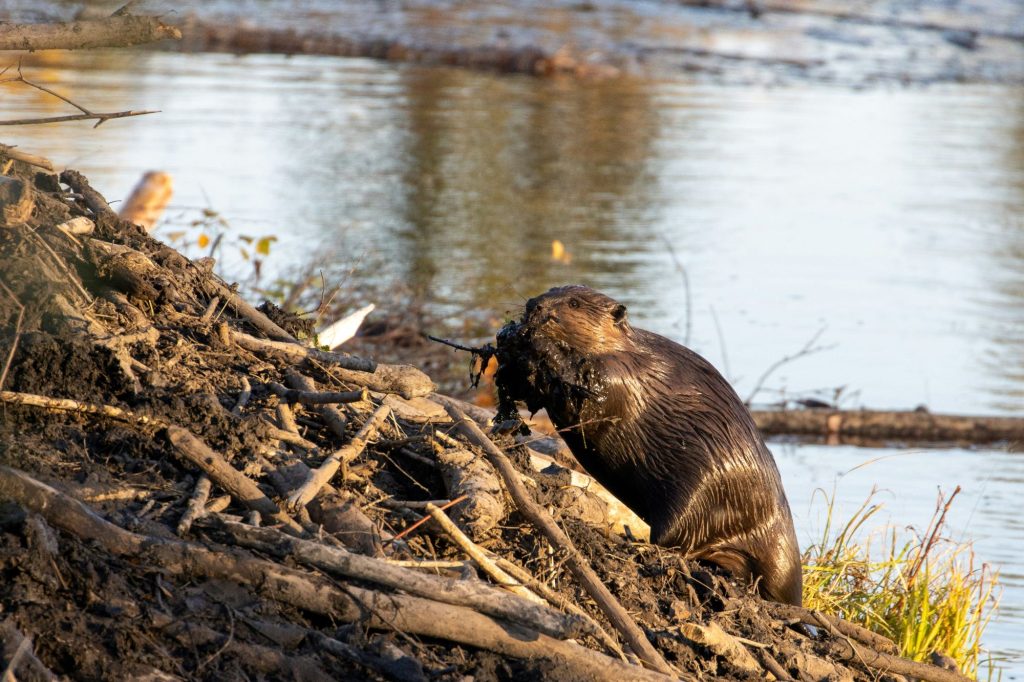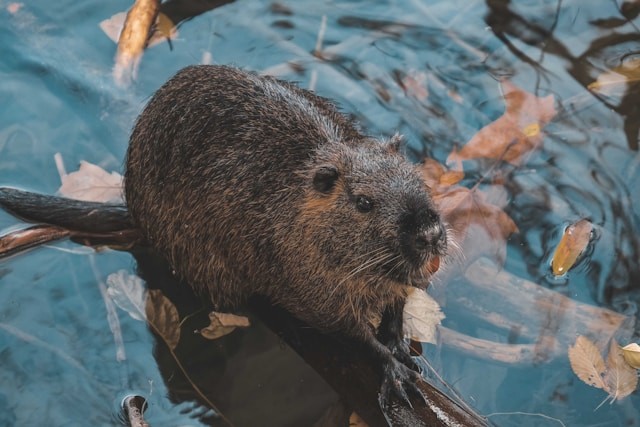Moon cycle:
- New Moon: 21st October 2025
- Full Moon: 5th November 2025
- New Moon: 20th November 2025
Deer Rutting Moon
As the days get shorter in the Northern hemisphere and winter draws ever nearer, many wild animals start to behave differently. Native Americans, whose existence is intertwined with nature more than ours, would celebrate these changes in the names they gave to the full Moon. So, for example, the Dakota and Lakota tribes named it ‘Deer Rutting Moon’ because this is when deer are looking for mates. The Algonquin named it as the ‘Whitefish Moon’ because now is when spawning takes place. The Tlingit (who live in the Pacific Northwest Coast area) name it ‘Digging’ or, sometimes, ‘Scratching Moon’ because animals are foraging for food in the woods and bears are digging their dens which they will stay in throughout the winter. The change in the weather is marked by the Cree and Assiniboine who refer to the ‘Frost Moon’ and the Anishinaabe (from the Great Lakes region) call it the ‘Freezing Moon’.
However, perhaps the most well-known name celebrates an animal that has seen a revival in its fortunes over the years, particularly in the UK. They live close to freshwater; they can grow up to just under a metre in length and they can weigh up to 38kg. Want another clue? Justin Bieber! Bieber is German for beaver – and it is the beaver who we celebrate now.
Beaver Moon
Europe’s largest native rodent, the Eurasian beaver (Latin: Castor fiber) was hunted to extinction in the UK and many other countries by the end of the 16th century. They were prized for their luxurious fur, meat and the oil secreted from their scent glands which was used to make perfume. Relatively recently, through a mix of unlawful wild releases, licensed releases, escapes and natural breeding, they began to return. In 2022, the UK government recognised beavers as native species and, three years later, they launched a scheme to reintroduce beavers into the wild.
Beavers are valued not just because they are a native species but because they play an important role in the environment. They are a keystone species, which means that they affect and influence many other organisms – plants and animals – in an ecosystem. So, a bit like a keystone in an arch, they may be few in number, but their role is crucial.
Beavers are famous for the dams that they build in small streams but they also dig canal systems and coppice trees. These processes help to create better quality wetlands which bring benefits to otters, water shrews, water voles, birds, invertebrates (especially dragonflies) and fish. Beavers contribute to reducing flooding – their canals and dams help the ground to retain water. They also clean the water and reduce the build-up of silt. They are true ‘ecosystem engineers’. At this time of year, they start to shelter in their lodges where they have stored food for the winter ahead and it is this activity that led Native Americans to refer to the ‘Beaver Moon’.

Noticing beavers
There are beaver reintroduction projects in many parts of England including Avon, Cumbria, Devon, Essex, Hampshire, Nottinghamshire and Shropshire. In 2009, the Scottish Beaver Trial released the first beavers to live wild in Scotland in over 400 years; they can be found in the Rivers Tay and Forth catchments. In Wales, a family of beavers was introduced in Montgomeryshire in 2021.
Rewilding
Beaver reintroduction is part of a process called ‘rewilding’ which is an approach to conservation designed to undo some of the damage that we have been doing to our natural environment for centuries. Rewilding involves letting nature take care of itself, leading to wilder and more diverse habitats. Rewilding schemes can be found all over the UK. One of the most well-known is the Knepp Rewilding Project in West Sussex which has grown to cover 1,400 hectares (3,500 acres).

Bonfire night
On the night of the full Beaver Moon, November 5, the moon orbits closer to the Earth than any of the other full moons this year – 356,980 kilometres (221,817 miles). It is one of the three ‘supermoons’ of 2025. Because the moon is so close, it will appear 7% larger than average – but that’s too small a difference to see. What you will see are fireworks! Bonfire Night, also known as Guy Fawkes Night, takes place on November 5 every year. The event commemorates an unsuccessful attempt to assassinate King James I and his parliament in 1605. While the fireworks can be spectacular, their bangs and flashes can scare wild animals and pets. Cats, dogs and other small animals which are easily frightened should be kept indoors on any night when fireworks might be set off.
Beaverly Activities
Have any children seen a beaver? Have they seen them on TV or read about them? What do they know about beavers (they are herbivorous and do not eat fish)? Create a class fact file and spot any sightings on a map. Ask friends and family too.
.
Invest in a night wildlife trail camera and set it up in the school grounds overnight to see if you have any night-time visitors. What other night time creatures visit? This could be a good way to document an unfolding year of wildlife around your school.
What other wildlife can you spot in February? Look out for tracks and other evidence. Keep a daily diary and have a rota of paired observation – either outside during lunch break, or quietly watching from a classroom window. Pupils could even build an outdoor hide.
Ask pupils how attractive they think the school grounds are to wild animals. Ask them to make a list of things they think might attract wild animals and say how the grounds could be used to attract more wildlife.
What other natural sounds might you hear at different times of the day? Take a compass outside and orient yourself facing north. Listen carefully and ask pupils to map the sounds they hear and the direction they come from. Can they identify different birdsong? Download the Merlin App and record birdsong – it will tell you what bird you are listening to.
Why do you think these beavers achieved something in two days what a government couldn’t in seven years? Read the story and collect amazing facts about how beavers alter landscapes.
References
- Rewilding Britain: https://www.rewildingbritain.org.uk/why-rewild/reintroductions-key-species/key-species/eurasian-beaver
- The Wildlife Trusts ‘Beavers’: https://www.wildlifetrusts.org/saving-species/beavers
- Natural England ‘Beaver wild release: a milestone for nature recovery in England’: https://naturalengland.blog.gov.uk/2025/02/28/beaver-wild-release-a-milestone-for-nature-recovery-in-england/
- Knepp ‘Beavers’: https://knepp.co.uk/rewilding/reintroductions/beavers/
- The Beaver ‘Beaver family released in West London wetland’: https://thebeaverlse.co.uk/beaver-family-released/
Dedication
This blog is dedicated to Mathew Frith, a very good friend of mine and a champion of London’s wildlife for decades. He had agreed to write this November moon blog. Sadly, Mathew died, much too young, in August.
Professor Justin Dillon is President of NAEE; in his day job he works in the Centre for Climate Change and Sustainability Education at University College London.
